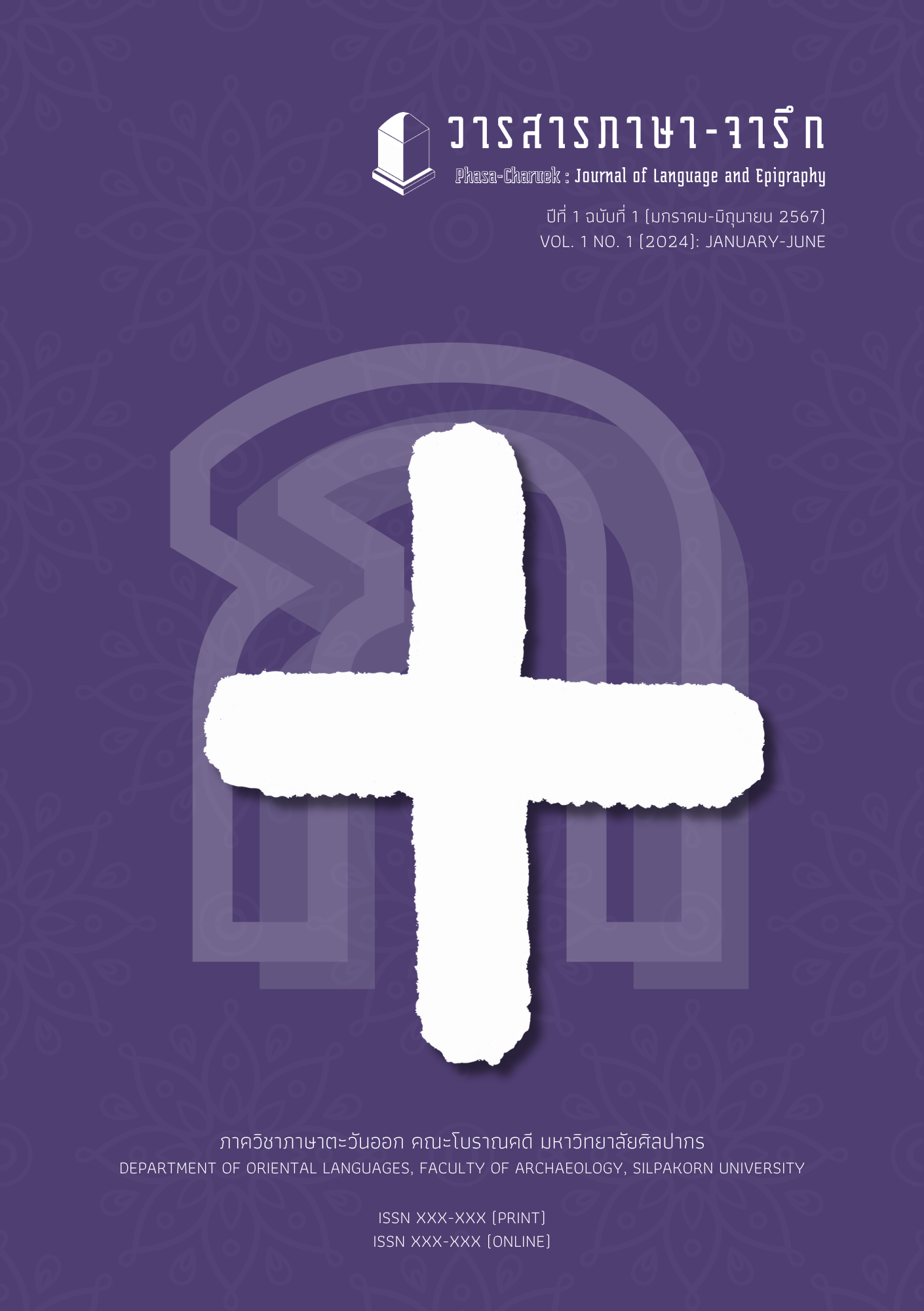From “Sunakha” to “Maa”: An Observation on the Context of Language, Society and Religion
Main Article Content
Abstract
This academic article entitled “from Sunakha to Maa: an observation on the context of languages, society and religions” consists of the objectives to present an observation on the terms and their meanings of Pali ‘sunakha’ (shunaka, Sanskrit) and explore the use of the term ‘maa’ (dog) in relation to the context of Thai society. As studied, it was found that originally the term ‘sunakha’ has positive meanings and all the meanings can be divided into 5 groups namely; 1) an animal has beautiful nails; it does not hide its nails 2) an animal obeys the owner; it obeys the words and commands after listening to the sounds of owner 3) an animal can hunt others such as rabbits etc., 4) an animal is the fleet one and 5) an animal prefers to walk around. Due to the behavior of dog freely walked around, it may make people unsatisfied with doing some things. Therefore, people mostly gave their negative views toward the dog in the context of Thai society until they used the term ‘maa’ meaning rude and impolite. To support the earlier mentioned matter, it can be observed on the different idioms related to dog such as maa moo (bullying one man in large numbers) etc. Thai people mostly used such the idioms in the negative view.
Article Details

This work is licensed under a Creative Commons Attribution-NonCommercial-NoDerivatives 4.0 International License.
References
จันทบุรีนฤนาถ, พระเจ้าบรมวงศ์เธอ กรมพระ. (2513). ปทานุกรมบาลี ไทย อังกฤษ สันสกฤต. พระนคร: มหาวิทยาลัยมหามกุฏราชวิทยาลัย.
ญาดา อารัมภีร. (2564). “จ๋า จ๊ะ วรรณคดี: หมา หรือ คน” มติชน (ออนไลน์). เข้าถึงเมื่อวันที่ 16 มิถุนายน 2567. เข้าถึงได้จากhttps://www.matichonweekly.com/column/article_472874
พระธรรมกิตติวงศ์ (ทองดี สุรเตโช). (2550). พจนานุกรมเพื่อการศึกษาพุทธศาสน์ ชุดศัพท์วิเคราะห์. กรุงเทพฯ: เลี่ยงเชียง.
มหาจุฬาลงกรณราชวิทยาลัย. (2539). พระไตรปิฎกภาษาไทย ฉบับมหาจุฬาลงกรณราชวิทยาลัย. กรุงเทพฯ: โรงพิมพ์มหาจุฬาลงกรณราชวิทยาลัย.
ราชบัณฑิตยสถาน. (2535). ราชนีติ-ธรรมนีติ. กรุงเทพฯ: โรงพิมพ์สหธรรมิก.
ราชบัณฑิตยสถาน. (2539). พจนานุกรมฉบับราชบัณฑิตยสถาน พ.ศ. 2525. พิมพ์ครั้งที่ 6. กรุงเทพฯ: อักษรเจริญทัศน์.
ราชบัณฑิตยสถาน. (2556). พจนานุกรมฉบับราชบัณฑิตยสถาน พ.ศ. 2554. กรุงเทพฯ: ราชบัณฑิตยสถาน.
วิจิตรมาตรา, ขุน. (2538). สำนวนไทย. พิมพ์ครั้งที่ 2. กรุงเทพฯ: สมาคมส่งเสริมเทคโนโลยี (ไทย-ญี่ปุ่น).
สมบัติ พลายน้อย. (2553). เกร็ดภาษาหนังสือไทย เล่ม 2. กรุงเทพฯ: สำนักพิมพ์พิมพ์คำ.
Boruah, B.K. (2014). Comparative Tai Vocabulary. Dibrugarh: Centre for Studies in Language, Dibrugarh University.
Dhongde, R.V. and Phramaha Wilaisak Kingkham. (1992). “Standard Thai and Tai Phake: A Comparison of Phonology and Morphology (Online).” Accessed 16 June 2024. Available from http://sealang.net/sala/archives/pdf8/dhongde1992standard.pdf
Monier-Williams, M. (2002). A Sanskrit-English Dictionary. Delhi: Motilalbanarasidass.
Raghavan, V. (1961). Sanskrit Literature. Delhi: Government of India Press.
Weingken, N. (2024). Taiphake High and M.P. School’s Teacher. Interview, June 16.
Willem, B.B. (2006). Gone to the dogs in ancient India. Verlag der Bayerischen Akademie der Wissenschaften.

